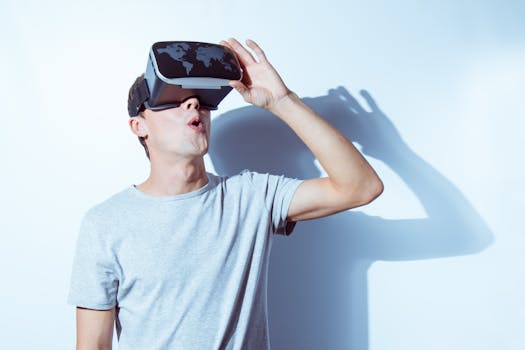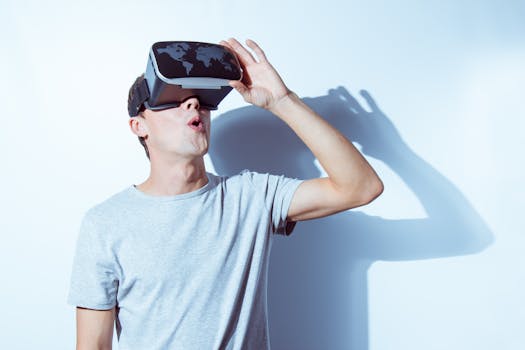The Impact of Wearable Tech on Patient Monitoring and Treatment
Wearable technology has become increasingly popular in recent years, with devices such as fitness trackers, smartwatches, and even smart clothing becoming a common sight. While these devices were initially designed for personal use, they have also found their way into the healthcare industry. The integration of wearable tech in healthcare has opened up new possibilities for patient monitoring and treatment, leading to improved outcomes and a more efficient healthcare system.
One of the most significant impacts of wearable tech in healthcare is its ability to provide real-time data on a patient’s health. Traditional methods of patient monitoring, such as periodic check-ups and manual recording of vital signs, can be time-consuming and may not provide a complete picture of a patient’s health. Wearable devices, on the other hand, can continuously track a patient’s vital signs, activity levels, and even sleep patterns. This data can be transmitted to healthcare professionals in real-time, allowing for early detection of any potential health issues and prompt intervention.
Moreover, wearable tech has also revolutionized the way chronic conditions are managed. Patients with chronic conditions, such as diabetes or heart disease, often require frequent monitoring and adjustments to their treatment plans. Wearable devices equipped with sensors and algorithms can track a patient’s blood sugar levels, heart rate, and other vital signs, providing valuable insights into their condition. This data can then be used by healthcare professionals to make informed decisions about the patient’s treatment plan, leading to better management of their condition.
Another significant impact of wearable tech in healthcare is its potential to improve patient engagement and adherence to treatment plans. Many wearable devices come with user-friendly interfaces and interactive features that allow patients to track their progress and set goals. This can motivate patients to take an active role in managing their health and adhere to their treatment plans. Additionally, wearable devices can also send reminders and alerts to patients, ensuring they do not miss any medication or appointments. This can be especially beneficial for patients with chronic conditions who require strict adherence to their treatment plans.
The use of wearable tech in healthcare has also led to a more personalized approach to patient care. With the help of wearable devices, healthcare professionals can gather a vast amount of data on a patient’s health, including their lifestyle habits and environmental factors. This data can be used to create personalized treatment plans that take into account the patient’s unique needs and circumstances. For example, a patient with asthma may be advised to avoid certain triggers based on data collected from their wearable device, leading to better management of their condition.
Furthermore, wearable tech has also made remote patient monitoring a reality. Patients who live in remote areas or have limited mobility can now receive quality healthcare without having to leave their homes. Wearable devices can transmit data to healthcare professionals, who can then monitor a patient’s health remotely and provide timely interventions if necessary. This has not only improved access to healthcare for patients but has also reduced the burden on healthcare facilities, especially in times of crisis such as the current COVID-19 pandemic.
In conclusion, the integration of wearable tech in healthcare has had a significant impact on patient monitoring and treatment. From providing real-time data and improving chronic disease management to promoting patient engagement and personalizing treatment plans, wearable devices have transformed the way healthcare is delivered. As technology continues to advance, the future of wearable tech in healthcare looks promising, with the potential to further improve patient outcomes and revolutionize the healthcare industry.
Exploring the Potential of Wearable Devices in Disease Prevention and Management

Wearable technology has become increasingly popular in recent years, with devices such as fitness trackers, smartwatches, and virtual reality headsets becoming a common sight. While these devices have primarily been used for personal health and fitness tracking, there is a growing interest in their potential for use in healthcare. In particular, wearable devices have shown promise in disease prevention and management, offering a new way to monitor and improve overall health.
One of the main advantages of wearable technology in healthcare is its ability to continuously monitor vital signs and other health data. Unlike traditional methods of monitoring, such as periodic check-ups or self-reporting, wearable devices can provide real-time data on a person’s heart rate, blood pressure, sleep patterns, and more. This data can be used to identify potential health issues early on, allowing for timely intervention and prevention of more serious conditions.
In the field of disease prevention, wearable devices have the potential to play a significant role. For example, in the case of chronic diseases such as diabetes, wearable devices can track blood sugar levels and provide alerts when they are outside of the normal range. This can help individuals make necessary lifestyle changes or seek medical attention before their condition worsens. Similarly, wearable devices can also track physical activity and encourage individuals to meet their daily exercise goals, which can help prevent conditions such as obesity and heart disease.
In addition to prevention, wearable devices also have the potential to improve disease management. For individuals with chronic conditions, such as heart disease or asthma, wearable devices can provide valuable data to healthcare professionals. This data can help doctors make more informed treatment decisions and adjust medications as needed. It can also help patients better understand their condition and how their lifestyle choices may be impacting their health.
Moreover, wearable devices can also aid in the management of mental health conditions. For example, smartwatches with built-in sensors can track stress levels and provide guided breathing exercises or meditation prompts to help individuals manage their anxiety or depression. This can be especially beneficial for those who may not have access to regular therapy sessions or struggle to recognize and manage their symptoms.
Another area where wearable technology shows promise is in the field of clinical trials. Traditionally, clinical trials rely on self-reporting from participants, which can be unreliable and subject to bias. Wearable devices, on the other hand, can provide objective data on a person’s health and behavior, allowing for more accurate and comprehensive results. This can lead to more effective treatments and medications being developed, ultimately benefiting patients.
However, as with any new technology, there are also challenges and limitations to consider. One of the main concerns with wearable devices in healthcare is the security and privacy of personal health data. As these devices collect sensitive information, it is crucial to ensure that proper measures are in place to protect this data from unauthorized access or misuse.
Additionally, there is also the issue of accessibility and affordability. While wearable devices have become more affordable in recent years, they may still be out of reach for some individuals, particularly those from lower-income backgrounds. This could create a disparity in access to healthcare and potentially widen existing health inequalities.
In conclusion, wearable technology has the potential to revolutionize healthcare, particularly in the areas of disease prevention and management. By providing real-time data and promoting healthy behaviors, these devices can help individuals take control of their health and improve their overall well-being. However, it is essential to address concerns around privacy and accessibility to ensure that wearable devices are used ethically and equitably in healthcare. With continued advancements and research, the future of wearable tech in healthcare looks promising, and it is an exciting area to watch as it continues to evolve.
Challenges and Opportunities in Integrating Wearable Tech into Healthcare Systems
Wearable technology has become increasingly popular in recent years, with the rise of smartwatches, fitness trackers, and other devices that can be worn on the body. These devices have the ability to track various health metrics, such as heart rate, sleep patterns, and physical activity. As a result, they have the potential to revolutionize the healthcare industry by providing real-time data and insights into a person’s health. However, integrating wearable tech into healthcare systems comes with its own set of challenges and opportunities.
One of the main challenges in integrating wearable tech into healthcare systems is the sheer amount of data that these devices can collect. With continuous monitoring, these devices can generate a vast amount of data, which can be overwhelming for healthcare providers to analyze and interpret. This can lead to data overload and make it difficult to identify the most relevant and actionable information. Additionally, there is a concern about the accuracy and reliability of the data collected by these devices. As they are not medical devices, there is a lack of standardization and regulation in terms of their accuracy and precision.
Another challenge is the privacy and security of the data collected by wearable tech. As these devices are connected to the internet, there is a risk of data breaches and unauthorized access to sensitive health information. This is a major concern, especially in the healthcare industry, where patient confidentiality is of utmost importance. Healthcare providers must ensure that proper security measures are in place to protect the data collected by wearable tech and comply with privacy regulations.
Despite these challenges, there are also significant opportunities in integrating wearable tech into healthcare systems. One of the most significant opportunities is the potential for early detection and prevention of health issues. With continuous monitoring, wearable devices can detect subtle changes in a person’s health and alert healthcare providers to potential problems before they become more serious. This can lead to better health outcomes and reduce the burden on the healthcare system.
Wearable tech also has the potential to improve patient engagement and self-management of health. By providing individuals with real-time data about their health, they can become more proactive in managing their well-being. This can lead to better adherence to treatment plans and healthier lifestyle choices. Additionally, wearable tech can also facilitate remote patient monitoring, allowing healthcare providers to monitor patients’ health from a distance. This is especially beneficial for individuals with chronic conditions who require frequent monitoring.
Another opportunity is the potential for cost savings in the healthcare industry. By using wearable tech to monitor patients’ health, healthcare providers can reduce the need for in-person visits and hospitalizations. This can lead to significant cost savings for both patients and healthcare systems. Additionally, wearable tech can also help in the early detection of health issues, which can prevent costly treatments and hospitalizations in the long run.
To fully realize the potential of wearable tech in healthcare, there needs to be a collaborative effort between technology companies, healthcare providers, and regulators. Technology companies must work closely with healthcare providers to develop devices that are accurate, reliable, and secure. Healthcare providers must also be trained on how to interpret and use the data collected by these devices effectively. Regulators must also establish guidelines and regulations to ensure the safety and privacy of patients’ data.
In conclusion, the integration of wearable tech into healthcare systems presents both challenges and opportunities. While there are concerns about data overload, accuracy, and privacy, there is also the potential for early detection and prevention of health issues, improved patient engagement, and cost savings. With proper collaboration and regulation, wearable tech has the potential to transform the healthcare industry and improve the overall health and well-being of individuals.



